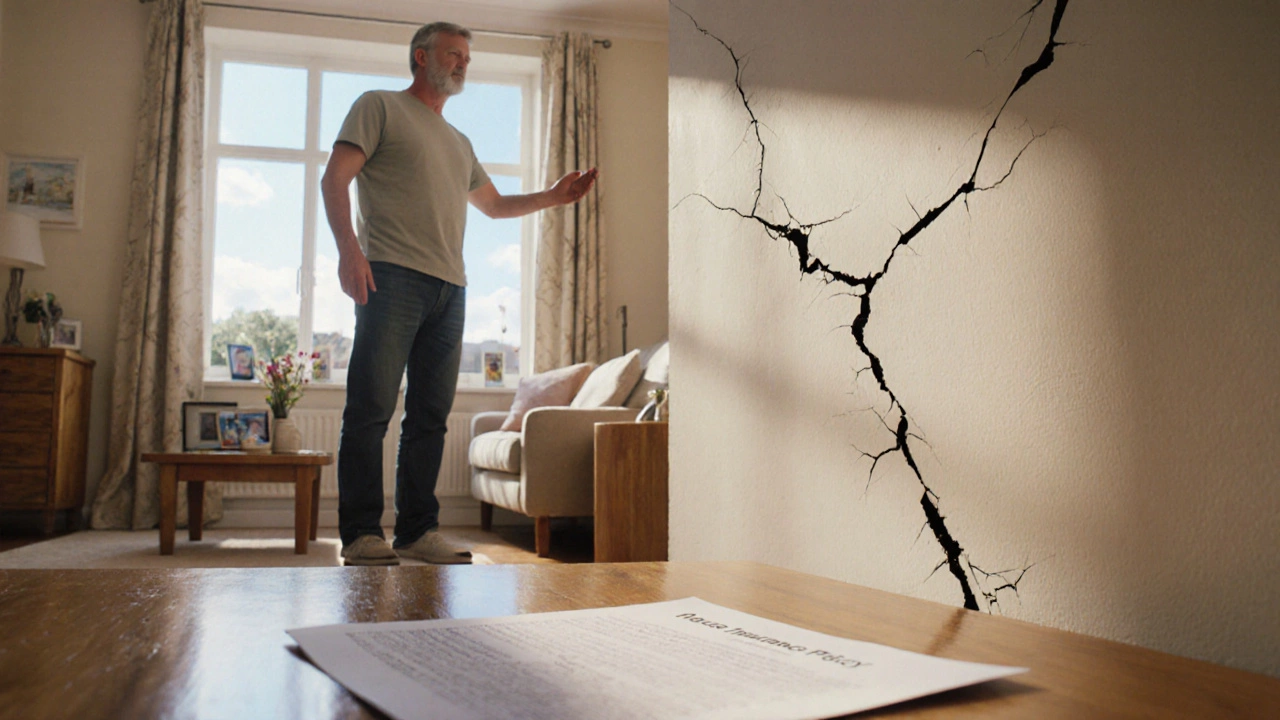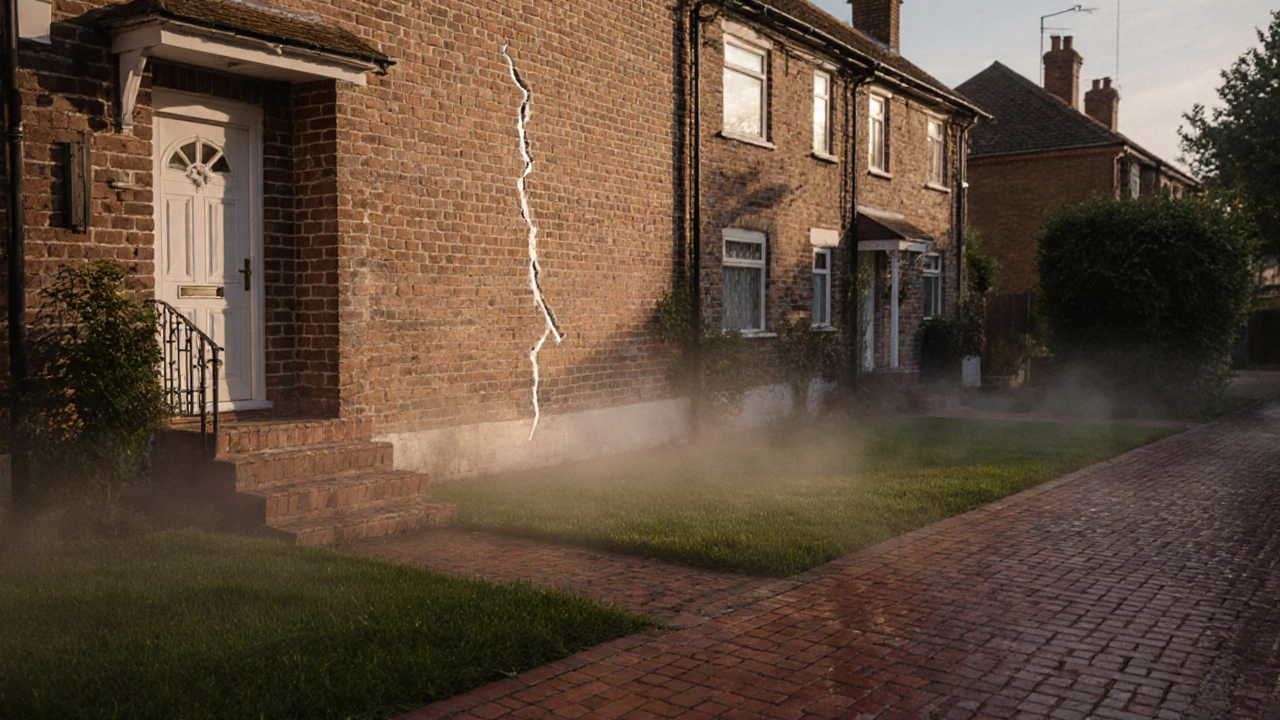Foundation Issues: What They Are, Why They Happen, and How to Deal With Them
If you’ve ever seen a crack in a wall or noticed uneven floors, you’ve probably wondered whether your home's foundation is to blame. Foundation issues don’t have to mean disaster, but ignoring them can lead to bigger problems and expensive repairs. In this guide we’ll break down the main reasons foundations fail, the signs you should look for, and easy actions you can take right now.
Why Do Foundations Go Bad?
Most foundation problems come from three basic sources: water, soil movement, and load stress. Leaking pipes, poor drainage, or heavy rain can soak the soil beneath your house, making it swell or shrink. When the ground shifts, the concrete slab or concrete block walls can crack. Another common culprit is soil that wasn’t compacted properly during construction – it settles over time and pulls the foundation down.
Even something as simple as a new heavy bookshelf or a garage remodel can add extra load that the original design didn’t anticipate. If the load isn’t evenly distributed, stress points appear and cracks form. The good news is that many of these causes are preventable with proper maintenance.
Spotting Foundation Issues Early
Look for these tell‑tale signs during a quick walk‑around:
- Horizontal or stair‑step cracks in foundation walls – especially if they’re wider than ½ in.
- Doors and windows that stick or won’t close properly.
- Uneven or sagging floors that bounce when you walk.
- Visible water pooling near the foundation after rain.
- Gaps between walls and ceilings, or a sloping floor that throws a ball.
If you notice any of these, grab a flashlight and measure the crack width. Document the location and take photos – this will help a professional give an accurate quote.
Do‑It‑Yourself Steps to Slow Down Damage
Before calling a specialist, try these simple fixes:
- Improve drainage: Clean gutters, add downspouts that direct water at least 3 feet away, and grade the soil to slope away from the house.
- Seal cracks: Small hairline cracks can be sealed with epoxy or polyurethane filler. This stops water from seeping in.
- Check for leaking pipes: Turn off the main valve and look for damp spots on walls or floors. Fix any leaks you find.
- Install a sump pump: If your basement floods often, a sump pump can keep the water level low.
- Consider support piers: For modest settlement, hydraulic piers can be installed under the slab to lift and level it. This is a job for a licensed contractor.
These actions won’t replace a professional repair, but they can buy you time and reduce the cost of a full‑scale fix.
When to Call the Pros
If cracks are wider than a quarter inch, if you see horizontal cracking, or if the floor feels spongy, it’s time to get a structural engineer or a foundation repair company involved. They’ll assess whether you need underpinning, carbon fiber reinforcement, or a complete foundation replacement. Getting a quote early can help you budget and avoid surprise expenses later.
Remember, the sooner you address foundation issues, the cheaper and easier the solution will be. Don’t wait for a small crack to become a big hole in your wallet.
Got more questions about foundation repair costs, insurance coverage, or DIY methods? Browse the related articles on our site – you’ll find detailed guides on horizontal crack repair, the most expensive foundation fixes, and what insurance will actually cover.

Does House Insurance Cover Foundation Issues? A Practical Guide
Oct 20, 2025, Posted by Damon Blackwood
Find out when house insurance will pay for foundation damage, what exclusions apply, and how to boost coverage with endorsements. Get step‑by‑step claim tips and a handy checklist.
MORE
Spotting Foundation Issues: How to Tell If Your Home Has Structural Problems
Sep 29, 2025, Posted by Damon Blackwood
Learn how to spot foundation issues early with clear signs, DIY tests, common causes, repair options, and prevention tips for homeowners.
MORE
When to Walk Away from Foundation Problems Without Regret
Apr 9, 2025, Posted by Damon Blackwood
Deciding when to walk away from foundation problems can be challenging. Knowing the signs of significant issues can help you make informed choices about your property. This guide explores when it's wise to tackle repairs or consider other options. Arm yourself with insights to navigate these tough decisions with confidence.
MORE
Major Foundation Issues: What You Need to Know
Mar 26, 2025, Posted by Damon Blackwood
Foundation issues can significantly affect the safety and value of your home. Common signs like cracks in walls or uneven floors often indicate deeper problems. Understanding major foundation issues helps homeowners take timely action before damage worsens. Learn about the warning signs and steps to address these challenges effectively.
MORESEARCH HERE
Categories
TAGS
- foundation repair
- commercial construction
- construction
- new builds
- home improvement
- home renovation
- bathroom renovation
- residential construction
- construction materials
- home foundation
- renovation tips
- building types
- contractor
- foundation cracks
- home construction
- architectural services
- building codes
- construction differences
- home inspection
- kitchen installation